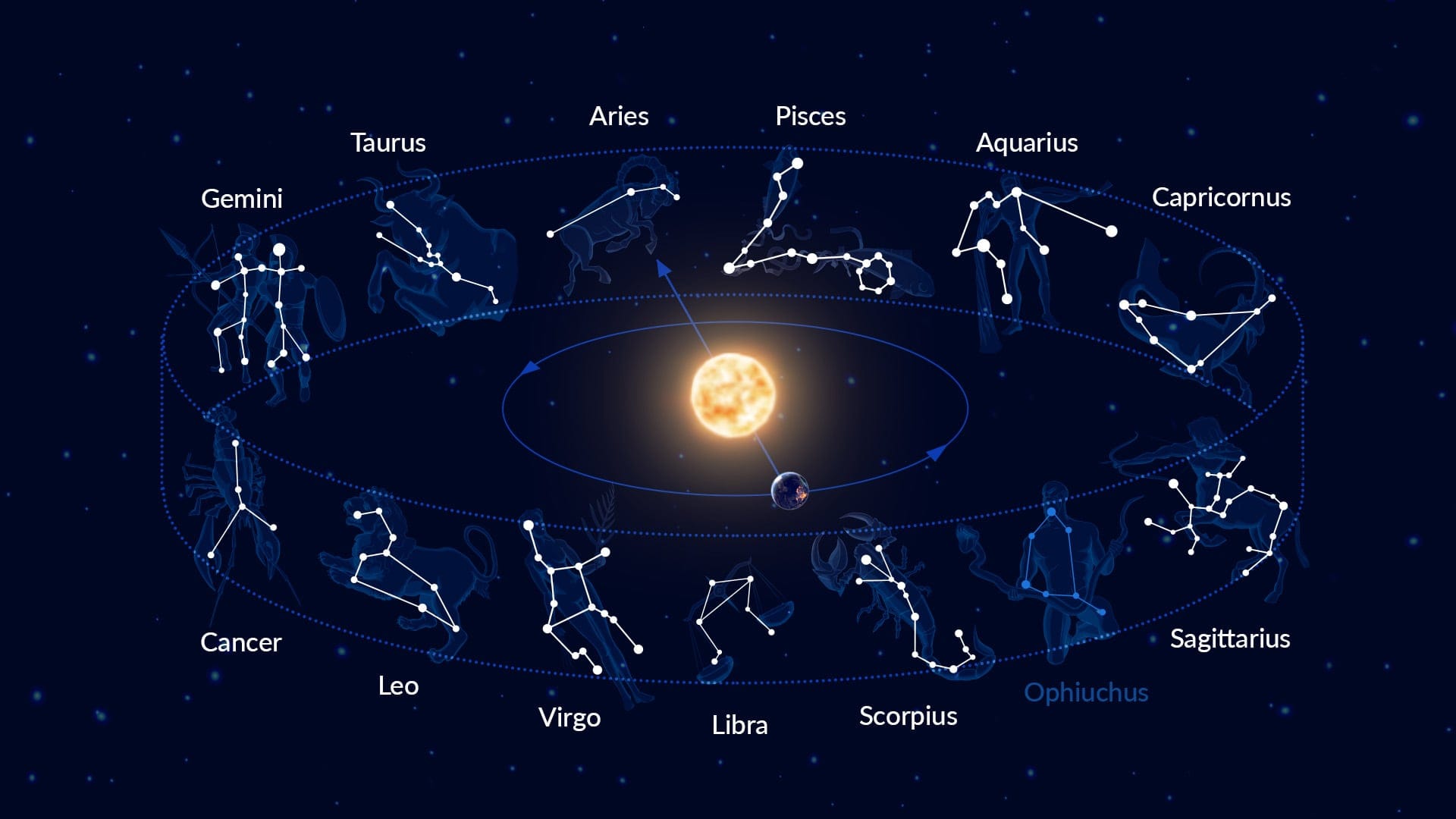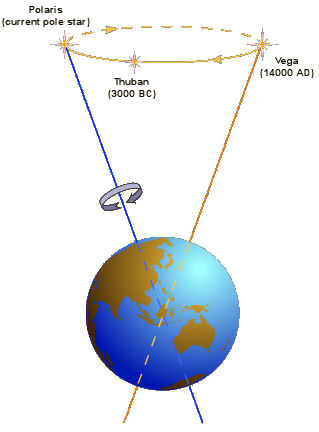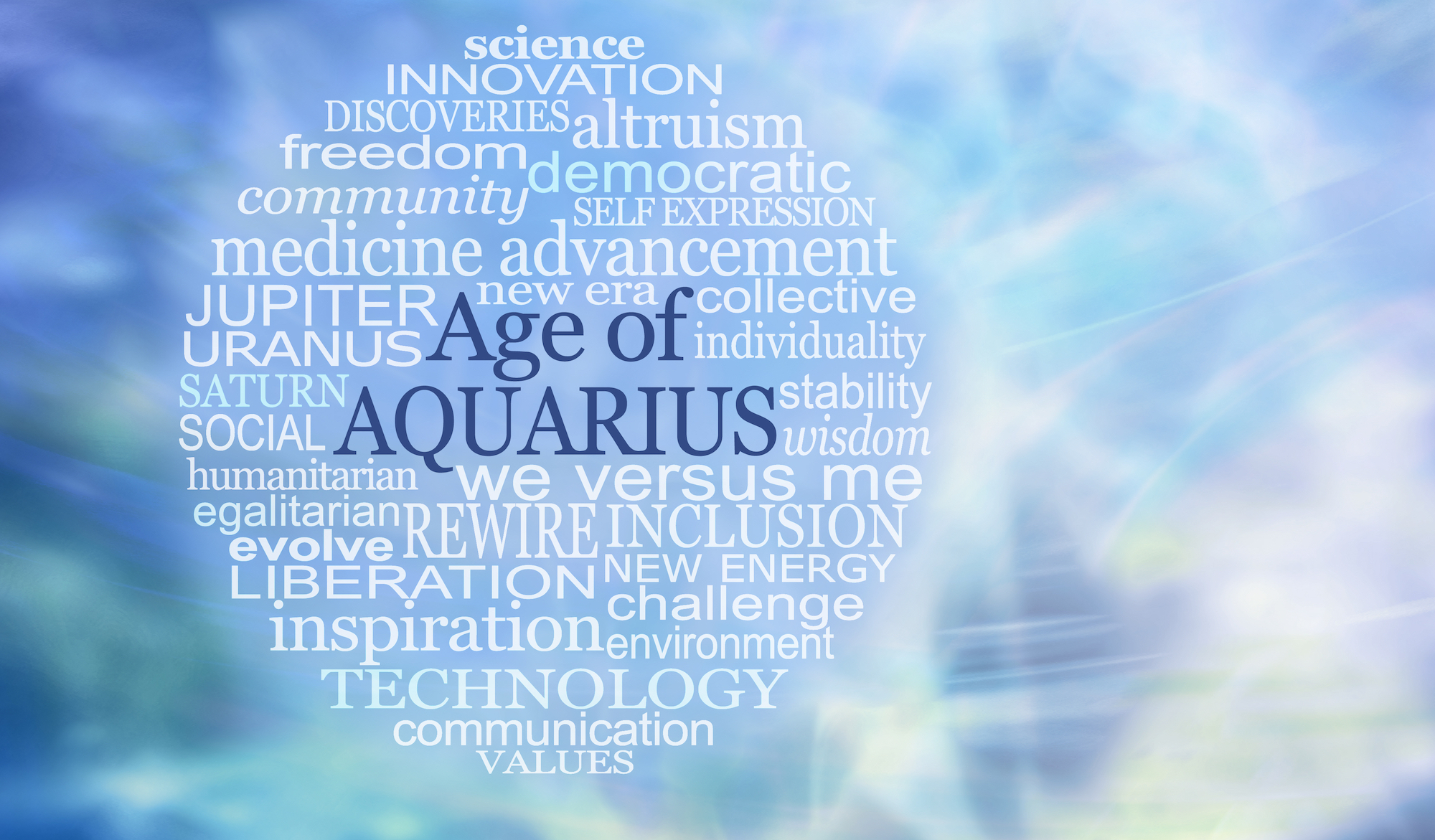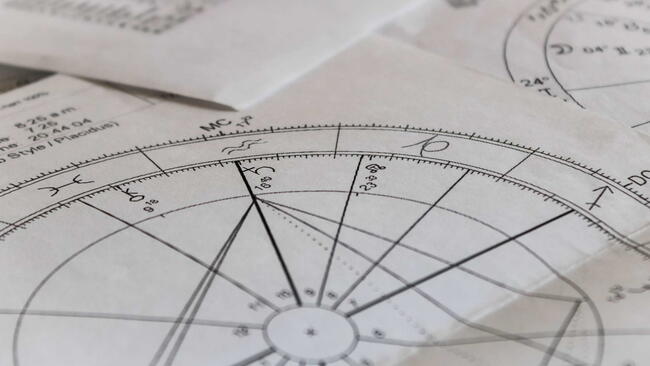Are we transitioning into the “Age of Aquarius”? This is more than just a song. It’s real, and we are drifting into a new astrological age. So, what’s it all about? And what does it mean? Let’s take a look.
What is An Astrological Age?
Something that most people don’t know is that the position of the planets in the Zodiac signs is different astrologically than they are astronomically. If one were to look through a telescope at the celestial bodies, they would not be traversing the actual constellations the way that astrologers say they are.
First, let us define a few basic terms:
Celestial Sphere
An imaginary sphere projected into space representing the entire sky, with an observer on Earth at its center. Picture yourself as standing at the center inside a clear ball, with the Sun, Moon, stars, planets, and other celestial objects projected overhead onto the dome, which is the upper half of the sphere. (The upper and lower halves of the sphere are divided by the horizon.)

Ecliptic
There is a path that the Sun appears to take around this celestial sphere. We call this the “ecliptic” plane. See the yellow dotted line above. This plane and the path are not straight around but tilted, tipped 23.44 degrees from that of the celestial equator (which is Earth’s equator projected out onto the celestial sphere). If we were to calculate the Sun’s position at the same local time each day, we would discover that the Sun’s position against the background of stars is moving eastward by just under 1 degree per day. (This is different from the east-to-west apparent motion of the Sun across the sky each day, which is due to Earth’s rotation.) Over the course of a year, the Sun would return to its original position, having completed a circle. All of those daily positions combine to form a line through the celestial sphere that defines the ecliptic—the Sun’s apparent annual path against the fixed stars, which is caused by Earth’s orbit around the Sun changing our perspective.
Zodiac
There are 12 constellations on the Sun’s ecliptic path, which are collectively called the Zodiac and extend a few degrees above and below the ecliptic line. In tropical astrology, the ecliptic is divided into 12 30-degree segments of longitude (which total 360 degrees or a complete circle). These 30-degree segments, which were named for the Zodiac constellations, were prominently positioned within those areas of the ecliptic plane at the time of naming, which was more than 2,000 years ago. Those segment names are still used today by many astrologers, but the positions of the actual constellations (from our view) have shifted and may no longer align with the 30-degree segments that were named after them. In other words, the Zodiac signs and astronomical constellations may no longer refer to the same positions.

So, why have the constellations shifted away from the original Zodiac positions? Everything in the cosmos is moving, and this particular differential is due to the precession of the equinoxes.
The what, you say?
Precession of the Equinoxes
There is a vast, nearly 26,000-year cycle caused by the real motion of Earth known as a “precession of the equinoxes.” Think of the Earth as a spinning top that wobbles a little as it orbits around the Sun. Sometimes, the top of Earth’s axis, the geographic North Pole, points to the star Polaris and, over time, it may point to a different star, such as Vega. Each full “wobble” (or about 25,772 years) is one full cycle of precession.

This 26,000-year cycle of precession is further broken down into the 12 zodiac signs or 12 “astrological ages.” This means that every couple of thousands of years, there is a new sign. When we’ve passed through all 12 astrological ages, we’ve passed through a full cycle. Astrologers refer to this as the Great Age through which we are passing.
Specifically, the astrological age is identified by the Zodiac sign that the March equinox (first day of spring in the Northern Hemisphere) is in. (The March equinox occurs when the Sun, moving northward on the ecliptic, intersects with the plane of the celestial equator. When the Zodiac was first named in ancient times, the backdrop of the March equinox point was Aries. Even though it is currently in Pisces, the March equinox point is still sometimes called the “first point of Aries.”) Every couple of thousands of years, there is a new sign on the equinox. If you look at the Sun’s location on the date of the March equinox over vast periods of time, the Sun is moving westward. (Note that this apparent motion is opposite to the yearly apparent motion of the Sun along the ecliptic.)
In many ways, all of this describes the major issues we are dealing with. An astrological age parallels major changes in Earth’s inhabitants as well, from society to politics to culture.
When is the Age of Aquarius?
A Great Age, as mentioned above, is associated with the position of the March equinox. In 2024, the location of the Sun on the March equinox is in the constellation of Pisces but also on the border of Aquarius. So, we are slowly moving into a new age, from Pisces to Aquarius.
In astrology, there’s no firm consensus as to the exact point when the Age of Aquarius begins and when the March equinox point moves from the Zodiac sign (or, by certain methods, the actual constellations) of Pisces to Aquarius.
Most astrologers believe that the Age of Pisces began roughly around the year 200. This means that the Age of Aquarius begins in the next few hundred years, though there are some differences of opinion.
We’re transitioning from the Age of Pisces to the Age of Aquarius.
What is the Age of Aquarius?
You may recall the popular song from the musical “Hair” with its opening lyrics:
”When the Moon is in the Seventh House
And Jupiter aligns with Mars
Then peace will guide the planets
And love will steer the stars
This is the dawning of the Age of Aquarius.“
–by American band, “The Fifth Dimension”
Of course, the Age of Aquarius is not some leftover from the “hippie” movement of the 1960s. Astrologically, this Great Age will accompany a couple of thousand years of harmony, egalitarianism, and understanding. The Age of Aquarius is culturally more intellectual, networked, and integrated around the globe.

What Does the Age of Aquarius Mean?
Each Age has a tussle between the attributes of its sign and the qualities of its opposite sign. For Pisces, the opposite is Virgo.
First, let’s take a look back at the Age of Pisces to see the major challenges that have been a part of our reality for the past 2,000 years. We have been largely considering the values of faith, belief, religion, and intuition (Pisces) versus science, proof, logic, and hierarchy (Virgo). We can look back to the end of the Age of Aries when the Roman Empire was in power. The people of India made the cow sacred during the Age of Taurus.
- Now we are shifting into the Age of Aquarius. Aquarius has to do with the good of the group, personal detachment, and concerns for the eclectic “whole.”
- However, it is the opposite; Leo believes in individual sovereignty, passionate feelings, and the ability to decide for oneself the appropriate course of action.
We are definitely seeing this dichotomy beginning to play out in our current reality. The trick is to acknowledge both sides and avoid an all-out battle between them.
More About the Aquarius Sign
Aquarius, the sign, has two rulers, Saturn and Uranus.
- Uranus shatters the status quo and overcomes old concepts and things that have outlived their usefulness. This can be greatly rewarding, but only if the new is fully understood and prepared for. Forward movement always brings change, yet many traditions and/or social customs have their roots in age-tested patterns that should not be overlooked.
- Saturn represents the way that we structure our world. It is always best to build on a foundation of rock rather than sand. Keep in touch with our roots and make sure that we are on track with our mission and goals. Revisions may be necessary. Yet, let’s be clear about where we are headed.
Leo energy needs to come from the heart. A willingness to see the sunny side of life should not be confused with a Pollyanna vision of “everything is fine.” Individual rights are an important part of being human and we should not let ourselves be bullied or coerced into giving them up. Our forefathers drafted the Constitution to remind us that our government works for us and not the other way around.
So hang onto your hats as we drift into this New Age! Remember, balance is the key.
Discover more astrological articles.














Comments